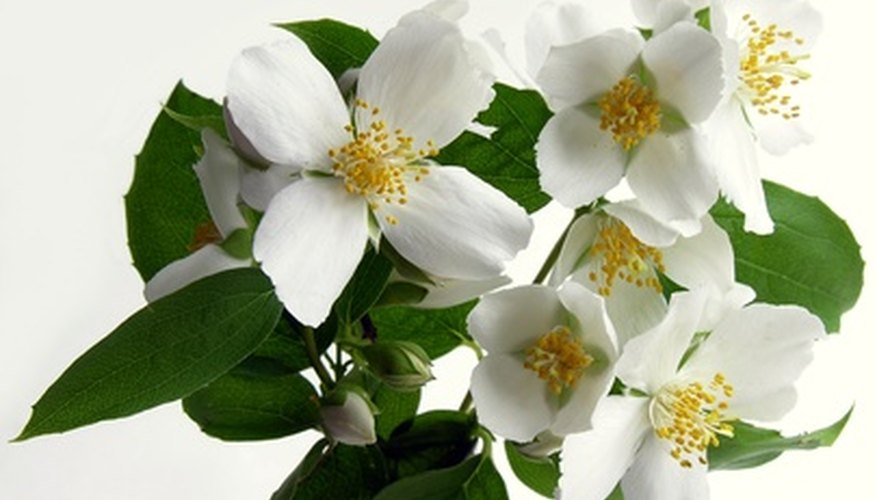The evergreen jasmine is a popular climbing plant favoured by gardeners for its delicate fragrance and abundant white or yellow flowers. It is grown in warm and tropical climates worldwide. It is easy to cultivate and tend, and generally only suffers from easily treatable pests and diseases. If left unchecked, most pests and diseases can kill a plant in a relatively short time, but they are easy to control if treated quickly and correctly.
Mildew
Fungal infections caused by viruses and bacteria are the most common diseases that afflict jasmine. Powdery mildew is the most common disease of all. It can be identified by the powdery white or grey spots on the leaves of the plant, which will rapidly spread to the stems. The mildew can be partially removed by rubbing the leaves together, but this will not eradicate the problem completely. The most effective treatment is to spray the plant weekly with a fungicide spray.
- Fungal infections caused by viruses and bacteria are the most common diseases that afflict jasmine.
- The mildew can be partially removed by rubbing the leaves together, but this will not eradicate the problem completely.
Blight
Jasmine stems can also develop dark lesions that wrap around the stem, which can cause blight, and, if untreated, will kill the plant. A necrotrophic fungus causes stem blight, and is most common when weather conditions become unusually cool or humid. Affected stems should be removed and destroyed to avoid spread of the blight. Neem oil, a broad spectrum insecticide, miticide and fungicide can also be used to treat the problem.
- Jasmine stems can also develop dark lesions that wrap around the stem, which can cause blight, and, if untreated, will kill the plant.
Root Knot Galls
This parasitic nematode thrives in places that are hot and humid. It exists in soil and its larva infect plant roots, causing root knot galls. Since it is parasitic, this knot can quickly drain a plant of all its nutrients and decreases flower output. This can be problematic to commercial growers that sell the essential oils from the flowers to perfume and cosmetic manufacturers. Planting resistant varieties, rotational planting and chemical control with nematicides work best in controlling this disease.
- This parasitic nematode thrives in places that are hot and humid.
- Since it is parasitic, this knot can quickly drain a plant of all its nutrients and decreases flower output.
Rust
Yellow or orange pustules, which can be found on all parts of the plant, are an indicator of rust. As rust takes hold, it can distort and disfigure the plant. Pruning and treatment with a copper or sulphur spray will help rid the plant of rust.
Pests
Insects, bugs and pests can all damage jasmine. Aphids are among the most destructive, and exude a black, soot-like mould that can suffocate the plant completely. Leaf-eating caterpillars can also cause damage by devouring flowers and foliage quickly. Red spider mites and mealy bugs will have a similar effect, but pruning, and treatment with fungicidal and germicidal sprays should keep all these pests under control.
- Insects, bugs and pests can all damage jasmine.
- Red spider mites and mealy bugs will have a similar effect, but pruning, and treatment with fungicidal and germicidal sprays should keep all these pests under control.
